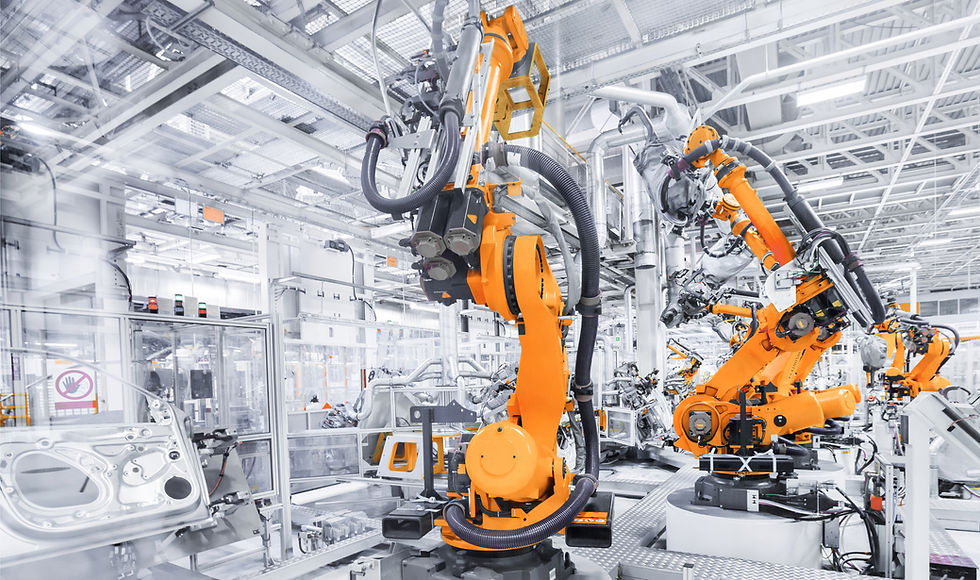'V' or 'U'?
- jpetricc
- May 31, 2020
- 3 min read
Updated: May 21, 2024

Now that there is no longer a question as to whether the US (and, in fact, the world) is in a recession, the question on everyone’s mind is how long will the recovery take. Will it be a “V-shaped” recovery, i.e., a quick bounce-back, or a “U-shaped” recovery, a slow recovery that is more typical of recoveries from recessions?
When the business shutdowns began in the US and Europe, most businesses tried to hold on to its workers, inventory, etc., in the hopes that the economy would reopen quickly. As the realization sunk in that the economic shutdowns would last for a protracted period of time, businesses started monetizing as many of their assets as they could, ranging from inventory to property and equipment, in order to generate cashflow. They also started laying off workers in order to conserve cash.
These layoffs initially hit workers who were primarily lower skilled, and typically had lower wages. For example, despite the substantial layoffs, average wages increased by 4.7% in April (vs the historical average of 0.3%). The increase occurred because so many more lower wage workers were laid off relative to higher wage workers that the remaining workforce had proportionately more higher wage workers than lower wage workers.
Overall, the economy has 35 million unemployed workers now, and the number is still rising. This translates to an unemployment rate of over 21%. However, those with at least a bachelor’s degree are only experiencing an unemployment rate of about 11%, while those with less than a bachelor’s degree are at a 26% unemployment rate.
While it is clear that so far the lower skilled workers have taken the majority of the economic hit, the depth of a recession is really determined by the hit to higher skilled workers. Job creation of lower skilled jobs occurs readily because the cost of adding these jobs is low for companies, and there is low cost to companies to quickly letting these workers go again if the need arises. However, job creation of higher skilled jobs occurs slowly. In contrast to lower skilled positions, it is costly for companies to hire higher skilled workers, so they tend to do it slowly. So for skilled workers, unemployment displays a high degree of “stickiness,” so that it both increases and decreases slowly.
For the above reasons, the depth of a recession, i.e., the ability of an economy to bounce back quickly from a recession, is determined by the number of skilled workers that are laid off. In a typical recession, the total unemployment rate reaches about 10-12% at its peak, with about a 6-7% unemployment rate for skilled workers. Then, from these levels of unemployment, it usually takes several years to get the unemployment level back down to normal levels. For example, at the start of 2010 total unemployment peaked at about 10% during the Great Recession, and it dropped steadily over the next decade to 4% at the start of 2020. The majority of the time was spent on decreasing the skilled unemployment rate due to its high degree of stickiness.
Given the historical averages, the current unemployment levels portend a serious problem for the V-shaped economic recovery (the quick recovery) hypothesis. While it is difficult to estimate, let’s say that about half of the skilled unemployment rate we quoted above will reverse itself quickly. The quick reversal occurs because firms simply laid these workers off temporarily just to save on cash in the short-term but plan to bring them back quickly. That means of the 11% skilled unemployment rate, about 5-6% will still be unemployed after this callback. The 5-6% represents the “true” unemployment rate. But that means based on the historical average of peak unemployment during recessions, we are already at typical peak unemployment for skilled workers in a recession. So, even if we have no more layoffs, we are looking at a long journey before we get to normalcy on the job front.
Of course, in reality, layoffs of skilled workers are increasing. As the shutdown continues, even firms with large cash balances, ranging from tech firms like Uber and Airbnb to industrials like GE and Boeing, have started laying off a substantial number of their workers — these are typically higher skilled workers. So, the unemployment rate among skilled workers is increasing, possibly even accelerating. A U-shaped recession is looking much more likely, assuming we can get a substantial jolt of spending (from a combination of government, business, and individuals) in order to begin an economic recovery.
%20copy.png)



Comentários